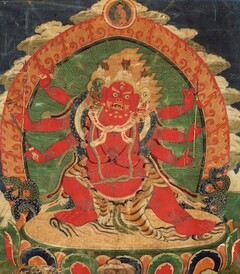Hayagrīva Series
English (13) | Deutsch (1) | Español (1) | Français (1) | བོད་ཡིག (13)
Texts related to Hayagrīva (rta mgrin), a wrathful manifestation of Avalokiteśvara who symbolizes enlightened speech and is usually depicted with a horse's head protruding from his crown:
